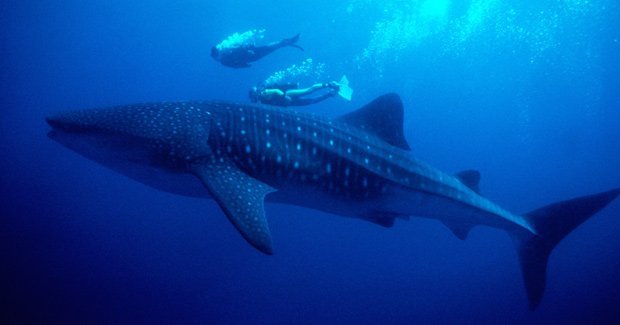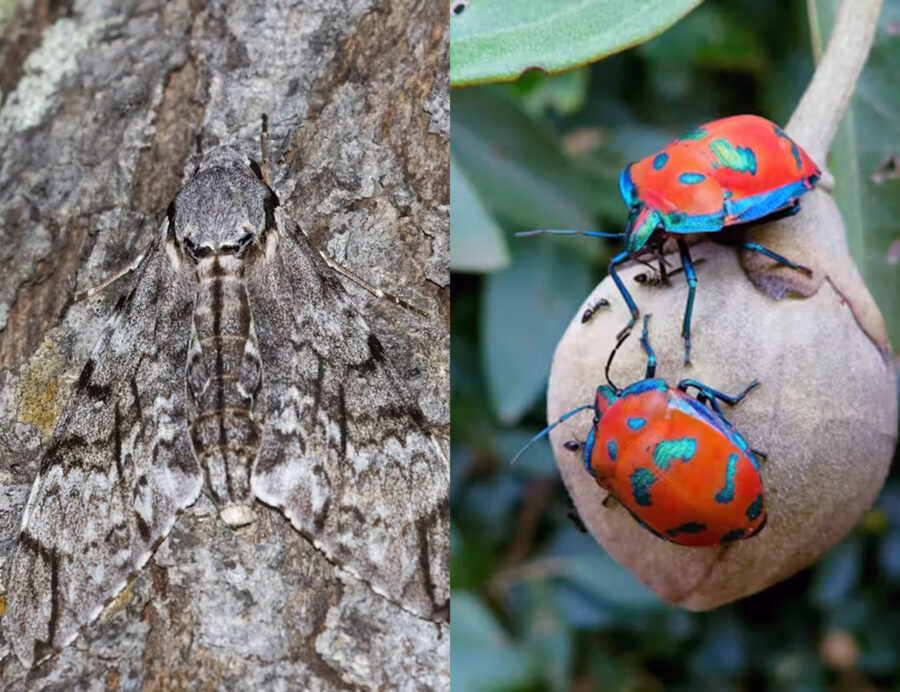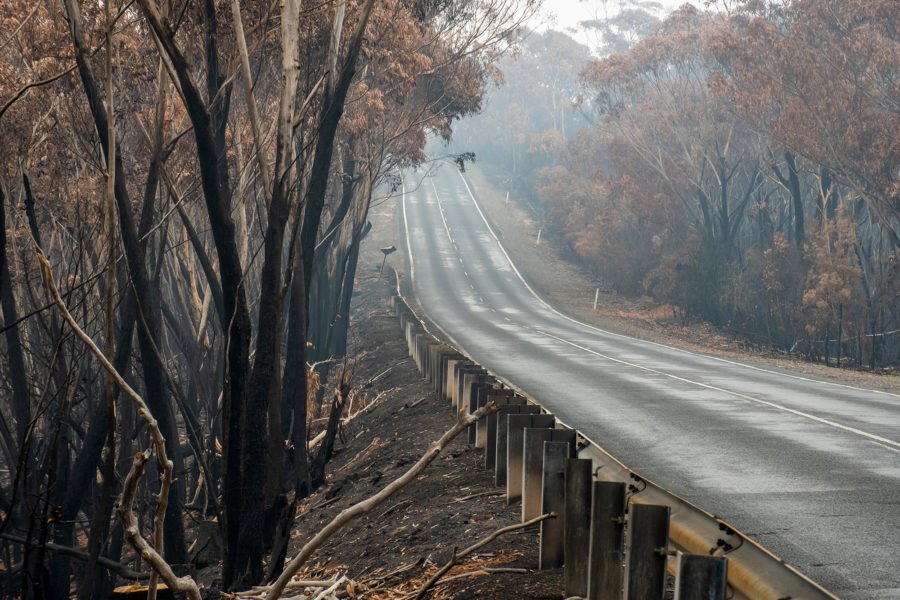Tagging whale sharks in the Maldives

ARI ATOLL, MALDIVES: Somewhere around our boat in the turquoise waters of the Maldives, the planet’s biggest fish is swimming by.
Reaching lengths of up to 20m and sporting a dramatic checkerboard pattern of bright polka dots, you’d think that spotting a whale shark would be easy. But we’ve been peering into the water for three hours now and so far, nothing.
We’re cruising a known shark aggregation zone, a stretch of the Indian Ocean outside the island necklace of South Ari Atoll, one of 26 coral formations that make up the Maldives archipelago. On board are conservation biologists Richard Rees and Adam Harman from the Maldives Whale Shark Research Programme and the tagging expert accompanying them, Brent Stewart, of Hubbs-SeaWorld Research Institute in San Diego, US.
This project, which began in 2008, is the first attempt to tag whale sharks in the Maldives and the team is hoping it will reveal precious information about the little-studied fish.
Whale sharks still largely unknown
Whale sharks (Rhincodon typus) were first discovered in the 1800s and are found throughout the tropical oceans, but relatively little is known about their behaviour, how long they live, their breeding habits, or their migratory routes – or indeed whether they migrate.
The research group is keeping an open-access database of the sharks. This means that each time one is found, one of the researchers will free-dive down to take a picture of it between the fifth gill and the side fin on both left and right sides. Using software similar to fingerprint-matching technology, the snaps of the shark’s spot patterns are compared to see if it has previously been photographed or is a new find. So far they have recorded 106 animals in the database, all but two of which are male.
The sharks are tagged using a harpoon and a spear gun just beneath the dorsal fin into a thick layer of fat. They rarely even bleed, the researchers tell me. The group is using two types of tag, one of which is programmed to release after a few days. This records data including temperature, depth and light level, before bobbing to the surface where it will transmit its data via Argos satellites. The other, smaller type of tag stays on the shark indefinitely and needs to be cut off at a later date by researchers.
Brent is also collecting skin samples from the fish for mitochondrial DNA analysis and other studies. This, he hopes, will help to reveal how closely related the sharks in the Maldives are to each other and to sharks elsewhere in the world. Some sharks he has seen have such similar spot patterns that Brent thinks they must be brothers, but nobody knows for sure.
Studying whale sharks, up close and personal
Suddenly, Adam spots a whale shark and everyone springs into action. Masks, snorkel and fins on, I leap into the water after the researchers and swim my fastest towards the large shark that’s drifting along, feeding on plankton.
Adam passes me one end of the measuring rope and I power up to the shark’s nose, looking directly into its eyes as Adam stays at the tail. The shark is a youngster, just 6.5m long. Meanwhile, Richard has swum beneath the fish to sex it; small claspers confirm that it’s a male. He snaps the shark on the left and right side with an underwater camera. Brent swoops in with the harpoon and tags the shark.
We are surfacing when Richard spots another and we free-dive down again. This poor creature has a badly distorted dorsal fin that is almost completely detached after an unsuccessful finning attempt last year. A shark fin of this size can go for US$10,000 (£6,600) in Taiwan or Hong Kong, and can be used as an eye-catching billboard outside a restaurant serving shark fin soup.
The new Maldivian government is taking shark welfare seriously and has introduced a reef shark hunting ban throughout the 26 atolls.
Whale sharks are described as “vulnerable” on the International Union for Conservation of Nature’s Red List, with their population expected to decline by as much as 50% over the next century. But in truth, nobody knows how vulnerable they are, the true number of whale sharks in the world, or whether that number is in decline or increasing. We don’t even know why the team has only seen two females and more than 100 juvenile males in the Maldives.
Where are all the other females, and where are the adults? These are some of the questions the team hopes to answer over the coming months in collaboration with other research groups. The organisation has now set up a permanent research station in the atoll, to compile year-round data on the animals.
Gaia Vince is an Australian journalist who is travelling around the world reporting on the effects of climate change and sending regular dispatches to Australian Geographic. She writes for the BBC, New Scientist and The Guardian. Find her blog at wanderinggaia.com.
RELATED STORIES




